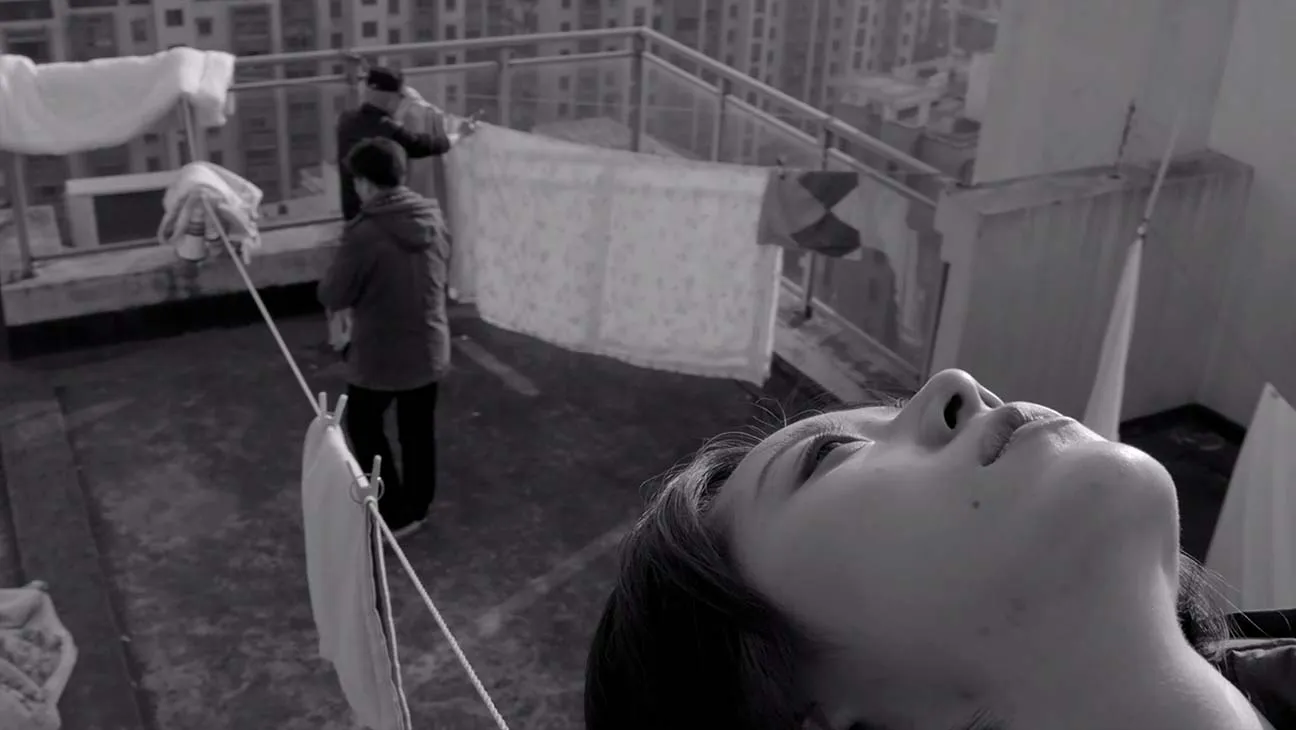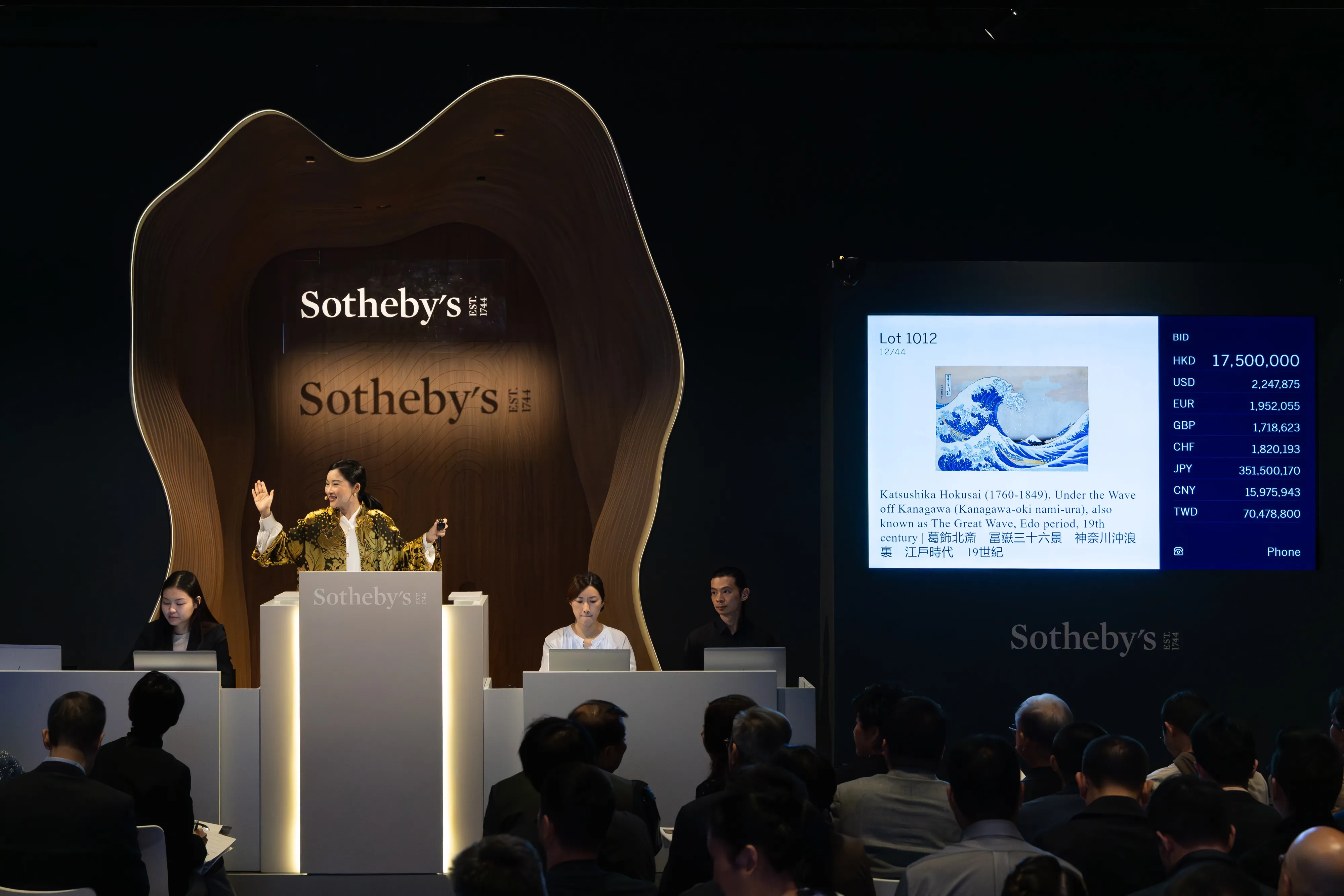The ground floor of a shopping mall may seem an odd place to find the headquarters of one of China’s leading avant-garde artists, but it’s actually a surprisingly appropriate setting for Xu Zhen and his MadeIn Gallery. With projects such as opening a convenience store full of empty products, Xu regularly blurs the boundaries between art and commerce, while this particular shopping center also happens to be adorned with images of pop culture characters such as Pikachu and Charmander on our visit — apt when we’re meeting a man also known for his offbeat interpretations of characters like Mickey Mouse and the Mario Bros.
Nevertheless, for an artist who has pranked the art industry since the beginning of his career and is known for some very attention-grabbing visual statements, Xu is remarkably low-key in person. For our visit, he wears a black shirt and glasses with thick dark frames, topped off with a mop of black hair.
Xu got his start in the art industry back in the late ’90s working in video art, a medium that he used as a means to make up for his lack of classical training. He subsequently rose from a college dropout to one of the most recognizable and important names in Chinese art.
A retrospect of his career can currently be seen at the National Gallery of Australia In Canberra, while the formative 1999 “Supermarket” exhibition has reopened in Shanghai Plaza, bringing together works from Xu and other legendary art figures like Zheng Guogu, Zhang Peili and Yang Fudong.
https://www.instagram.com/p/CGj54k9B_xA/
Working across media — from video and sculpture, to photograph and painting — Xu has positioned himself variously as artist, curator, CEO, thought leader, and much more. Throughout the past 25 years of his career, he’s consistently been able to court controversy and cause conversation around his work.
“I’m just messing about,” he says breezily of his work. “I believe once you become a standard middle-aged man, you will lose creativity in art. So you should give yourself some challenges and move beyond the things you are familiar with — move beyond the boundaries. You can see that we have always been doing things that are different in category and content. I have always been learning new stuff. Otherwise it is easy to be lost in praise.”
Related:
 “I Don’t Understand Art”: Teom Chen on His Unorthodox Route to Becoming a Digital Artist“I’m interested in experimenting with new technologies — to create new content is my metabolic process”Article May 04, 2020
“I Don’t Understand Art”: Teom Chen on His Unorthodox Route to Becoming a Digital Artist“I’m interested in experimenting with new technologies — to create new content is my metabolic process”Article May 04, 2020
As an example of his artistic controversies, one of his early video works showed Xu slamming a dead cat against the ground. It created a stir at an Italian exhibition and was subsequently removed. The gruesome nature of that early video work is also on display in “Rainbow,” a piece from 1998 when the artist was just 21 years old, and which shows a man’s back becoming increasingly more red from slaps that can be heard but are not seen in the video recording.
In the course of these early forays in video art, Xu became the youngest Chinese artist to show his work at the Venice Biennale, when “Rainbow” appeared at the 2001 iteration of the world-renowned art event. This early success marked him out as an artist to watch, even as he remained located in Shanghai, far from the center of the Chinese art world at the time, Beijing.
He went on to take part in the aforementioned exhibition, “Supermarket” which took place in a shopping mall. Xu’s work in and around commercial spaces has come to define a significant chunk of his career, with his art frequently on display at K11 malls (the brainchild of jewelry tycoon Adrian Cheng) throughout China; his “XUZHEN Supermarket,” a shop full of empty products (which debuted at Art Basel Miami Beach 2007), also popped up earlier this year at new Shanghai-based retail concept, TX Huaihai.

“XUZHEN Supermarket” (2007/2016)
“After all these years since China’s opening up, it has developed new characteristics, a lot of times it means increasing convenience,” Xu says regarding art in commercial centers. “When it comes to art, Chinese audiences don’t seem to have a preference for where they are viewing the art, no matter if it is a gallery or a shopping mall. Shopping malls and non-standard exhibition spaces are actually very excited about collaborating with art. Our goal is to keep artists and their artworks close to life.”
Xu is well aware of the challenges that such endeavors can throw up however. When art has become a product in the market, questions are inevitably raised over its authenticity, whether it loses its lustre and whether it can stand the test of time. But he wants his work to live through this conflicting double standard. “While I am pursuing new trends and keep up with the speed of how society changes, I also want to become classic.”
Related:
 Artist Cao Fei on Why We’re “Drifting in the Virtual World Without an Exit”The artist’s solo show at Serpentine Galleries in London explores two decades of her fascinating workArticle Aug 06, 2020
Artist Cao Fei on Why We’re “Drifting in the Virtual World Without an Exit”The artist’s solo show at Serpentine Galleries in London explores two decades of her fascinating workArticle Aug 06, 2020
His career can, to an extent, be charted by the multifarious ways in which he has dealt with ideas of commerce and business in relation to the development of the art industry in China, but also in relation to the development of the country as a whole. The foundation of his MadeIn Company, referencing the phrase “Made in China,” kicked off the idea of Xu Zhen as businessman in earnest, as he announced himself the company’s CEO.
Founded in 2009, MadeIn Company followed his earlier experiments with Italian expatriate David Quadrio in the Shanghai-based non-profit alternative space, BizART Center. The establishment of MadeIn also came with an announcement that Xu Zhen would no longer be making art under his own name, but rather under the brand MadeIn. Four years later, MadeIn Company launched the brand XU ZHEN®, which further established his art in the concept of business and branding. While we can choose to see this as commentary on the increased commercialization of art and the demand for the “brand” of Xu Zhen, these entities have — somewhat ironically — also allowed the artist to step back and occupy a more anonymous role.

“Under Heaven” (2018)
Similarly, while works made under the MadeIn and XU ZHEN® monikers seem to hug tight to the idea of China’s development, Xu has been eager to distance himself from the label of “Chinese artist,” instead preferring to refer to himself in a global context. “For Westerners, I am a contemporary Chinese artist. For us, it is more dependent on the individual artist. A label is only a tool.”
This attitude can be seen in the way that he plays with iconography, sculpture, and through his toying with iconic cartoon figures like the Mario Brothers, Mickey Mouse and Pikachu.

“Hello” (2018-2019)
His plays on statues, in works such as “European Thousand-Hand Classical Sculpture” and “Hello,” each pose interesting questions about ideas of history and of idol worship. In his series, “Eternity,” he fuses together elements of “Eastern” history and spirituality with standards from cultures based in places ranging from Europe to Africa. An example is “Eternity — Northern Qi Standing Buddha, Amazon and Barbarian,” which as the name suggests, conjoins a Northern Qi Standing Buddha with the body of a Roman statue of an Amazon and Barbarian.
This heady mixture of influences is at once inspiring and thought-provoking, with each of the two sides standing at odds with one another. It is again a reference to Xu’s hope to free himself from the shackles of being termed a “Chinese artist,” rather than simply an “artist.” As Barbara Pollack says in her book, Brand New Art From China: A Generation On the Rise, “his definition of identity is rooted more firmly in a borderless internet culture than in Imperial dynasties or Communist iconography.”
Amid all this however, it’s clear that Xu is keen to forge a unique path — not just for himself, but for those around him. “Before, cultural standards were too dependent on the West,” he says. “I feel over the next few years, everyone has to work hard to form their own standards. After we form these standards, we may be able to evaluate our value globally again.”
















